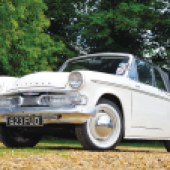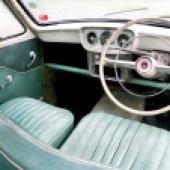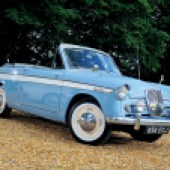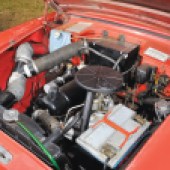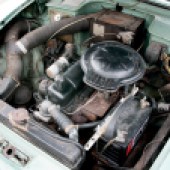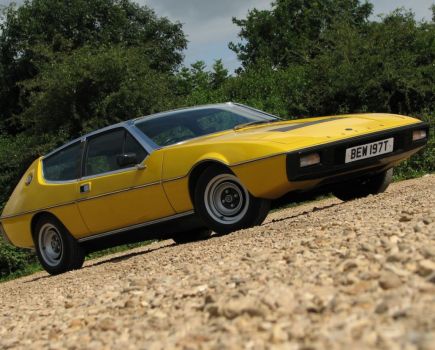During the 50s and 60s, the Audax-series Hillman Minx enjoyed a reputation as a solid, no-frills performer. Here’s how to buy a great example today
Words: Iain Wakefield
Rootes first applied the Minx name to a small 1931 body-on frame saloon, a model that continued to be produced for military and essential civilian use throughout the war years. Post-WW2 car production at Rootes for public consumption resumed in 1945 with the very similar looking Phase I Minx, or Mk1 as it’s sometimes known. Although Hillman offered a slightly improved Phase II variant between 1946-7, it was all change in 1948 when the pre-war design was replaced by the far more modern looking ponton-styled Phase III Minx.
Power for the slab-sided Hillman Minx came from a 1276cc side-valve engine that was replaced by a 1390cc OHV unit for the 1954 introduced Phase VIII. By now the Minx was starting to look severely dated and in 1956 Rootes took the covers off the Raymond Loewy designed two-door Sunbeam Rapier pillarless coupe, the first of a new series of Audax-styled cars.
This was quickly followed up by the four-door Series 1 Hillman Minx saloon and a short while afterwards the 1.5 litre OHC powered Singer Gazelle broke cover. A smart convertible version of the Minx was a popular choice, especially on the export market, and four-door estate versions of the Minx and Gazelle appeared in 1957. Upgrades for the following model year included fitting the more powerful 1.5 litre Hillman OHV engine across the whole Audax range.
To boost the appeal of the Gazelle and Rapier, both cars received a second carburettor and for the 1959 model year, Rootes introduced the Hillman Husky two-door estate based on a shortened platform along with a van version of the Minx badged as the Commer Cob.
Although the Audax range was now covering a host of bases, the Hillman Minx was by far the best seller and in 1960 Rootes installed a 1592cc power plant across the range. In 1963 the facelifted Series 5 lost the previous model’s reverse rake rear window pillars for more upright affairs, a change that allowed for the fitment of larger rear doors. By now front discs were fitted across the whole range as standard and in a bid to boost sales, the company’s marketing material claimed how the Series 5 Minx was the first car to have ‘greased for life’ suspension and steering joints.
Despite the continued popularity of the Audax range, especially among fleet purchasers, the Rootes Group found itself in serious financial difficulties in 1962. To boost the appeal of its top selling range of cars, the original platform had been expanded to produce the slightly larger 1725cc powered Super Minx/Vogue/Sceptre models. However, by the mid-60s the Minx and its more upmarket siblings were starting to show their age when compared to newer, sleeker models produced by the competition and Audax production started to wind down in 1966 with the introduction of the Hunter lead Arrow range.

Hillman Minx ‘Audax’ values
The good news is that the Audax Minx offers excellent value for money. We’ve seen useable example sell at auction for as little as £2500, though £5000-£7000 is a sensible budget for a tidy car that’s ready to enjoy. Estates tend to command a premium, and a good Convertible can break the five-figure barrier. As an aside, the plusher Singer Gazelle can usually be found for £4500-£6000, but you pay a little more for a Rapier, with excellent examples commanding up to £12,000. Minx projects can be had for under £1000, but unless you can do the work yourself, it’s best to seek out a tidier example given the potential cost of restoration.
Insurance Costs
1965 Hillman Minx 1725 Auto, £7000 value
Example quote: £109.97 or £127.97 with Agreed Value.
Quotation supplied by Lancaster Insurance. Tel: 01480 400761
Quote based on a 45-year-old marketing manager, access to another car, no claims or convictions, club member, 3000 miles per year, no modifications, living in SP2 0HL. Disclaimer: Subject to underwriting criteria. An additional charge may be payable. Authorised and regulated by the Financial Conduct Authority.
Bodywork
Like all survivors built during this era, every car in the Audax range will corrode in all the usual places and the first area to check is along the inner edge of each front wing from the scuttle to the top of the headlights. Even if the front wings aren’t that rusty, the inner wings and front panel behind the grille along with the front valance will have been attacked by years of being blasted by road dirt and winter salt. Water can get into the body structure through a leaking front screen seal, where it will attack the metal out of sight and the first sign of any trouble will be a corroded floor pan along the seam where it joins the front bulkhead.
Moving around the bottom half of the car, the next areas to check are the front, mid-section and rear parts of the sills. As corrosion opens up the seams in these areas, water gets inside the chassis box sections and damage will then extend to the floors and can be difficult and expensive to put right. Severe corrosion will also attack all four wheel-arches and the lower sections of the front and rear wings.
Door bottoms can rot out if the drain holes have been neglected and the rear valance is an out-of-sight, out-of-mind panel. Any surface bubbling in these areas is a sign of expensive corrosion trying to burst out through the paintwork.
Over the years, a lot of examples will have had their undersides plastered with several layers of rubber-based under seal, which can become detached from the bodywork in some areas and collect moisture like a damp poultice.
When inspecting the underside, be aware of any bubbling or newly applied rustproofing – a careful tap with the blunt end of a screwdriver will indicate what lies underneath. A dull ‘thud’ will indicate work is required, while a clear ringing note will indicate sound metal that only needs fresh paint and a coat of rustproofing material.
The good news is that various owners’ clubs are able to supply a reasonable number of repair panels for the wings, doors and sills on these cars and whole replacement panels for some models, such as rear quarter panels, often turn up at autojumbles. If the car being viewed is an ultra-rare convertible, as well as carefully inspecting the condition and operation of the folding top, it’s highly recommended to seek professional help to ensure the body tub is sound and any structural repairs have been carried out correctly.
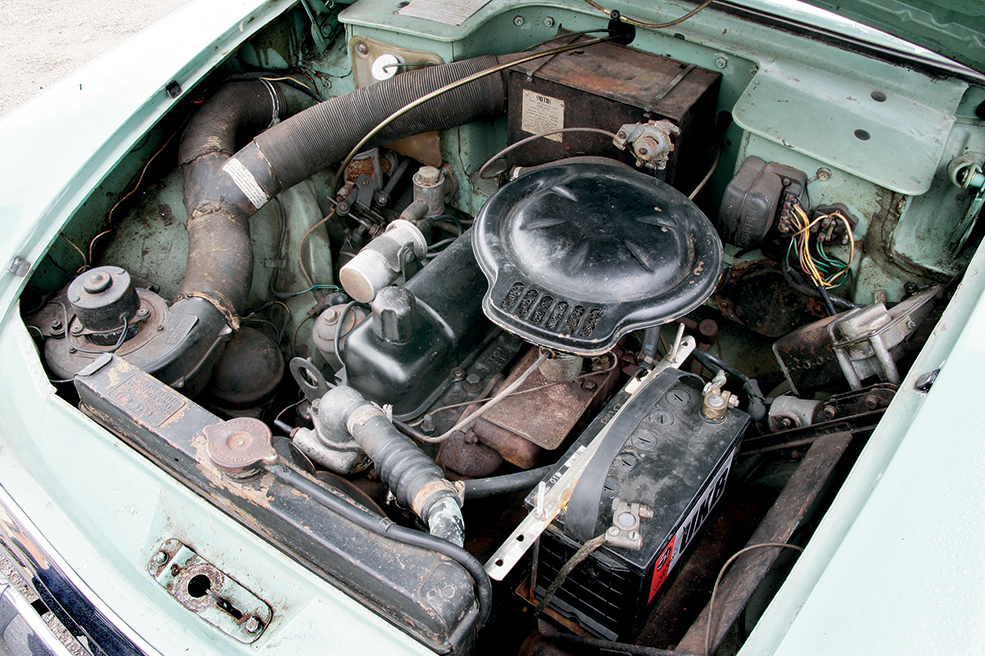
Engine and transmission
There’s certainly nothing complex about the range of overhead valve four-cylinder engines powering the Audax-series Hillman Minx. All three sized units have proved rugged and reliable in service, providing they’ve been serviced by the book. The all iron units fitted to the Minx (Rapiers had an alloy cylinder head) are noted as being less efficient when compared to equal sized rivals, but that’s not an issue today when these cars are only used for occasional days out.
Even though early Audax engines only had three main bearings, they were always regarded as being tough units and simple to repair. Later 1725cc engines had the benefit of five main bearings and these units are easily identified by having a dipstick tube mounted on the block rather than leading directly into the sump pan.
Servicing simply involves changing the oil and filter every year and checking the health of the spark plugs and points, greasing the suspension and if required, adjusting the tappets, ignition timing and air/fuel mixture. Check that all these jobs have been done, either by the owner or a classic-friendly local garage.
Also check when the coolant and brake fluid were last changed and if it was more than two or three years ago, subtract the cost a garage would charge to do the job (about £140-£180) from the asking price. A nice touch for the DIY owner is that the distributor, coil, dipstick and fuel pump filter on these cars are all located on the driver’s side of the engine, which makes a pre-drive health check easy and straightforward to carry out.
While looking around the engine bay, check for any excessive fluid leaks before removing the oil filler cap to look for any signs of coolant in the engine oil. This will show up as a slimy creamy coloured gloop and could be an indication that all’s not well with the head gasket.
Although all the different sized engines fitted to the Audax Minx all enjoyed a good reputation and are generally long lived, a known weakness was that the ring gear on the flywheel can break up, causing the starter to jam or fail to engage. By now, most cars will have been fitted with a replacement flywheel, but it’s a point to watch out for if the owner claims the car still has its original engine.
Unfortunately, gearboxes produced by Rootes during this period tended to suffer from chipped teeth on first gear. As well as a tendency for the lever to jump out of first gear on the overrun, this problem can be easily detected by listening out for any clicking sounds while driving off in first gear.
Early cars had a column mounted gear lever and wear in the linkage can make selecting gears difficult, but careful adjustment can sometimes level out the wear. A floor mounted gear lever was offered as an option on top spec early cars, a situation that slowly reversed when column change became an option before being dropped completely.
It’s a difficult point to check, but later all-synchromesh gearboxes should be filled with SAE 20 or 30 engine oil rather than a hypoid gear oil, which should only be used in the early ‘box. Using the incorrect oil in the later ‘box can lead to damaged bronzed synchro cones and thrust washers.
A rare find would be a two-pedal Audax Hillman Minx, the ‘Manumatic’, where the clutch was controlled pneumatically when the gearlever was moved. Sourcing parts and the specialised know how to repair this interesting system are now both hard to find.
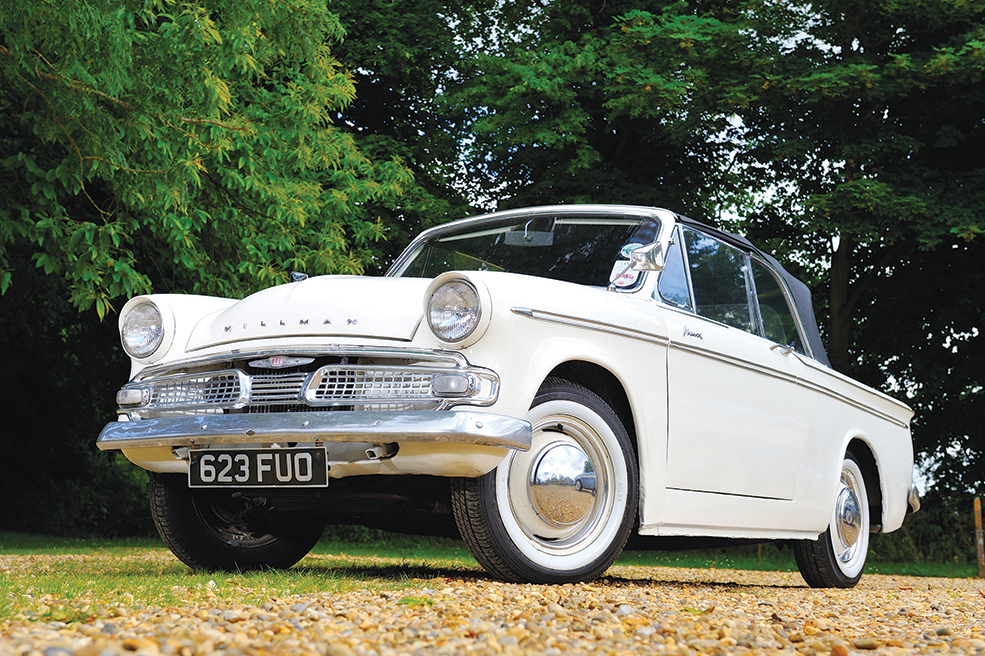
Suspension, steering and brakes
There’s nothing complicated about the suspension on the Audax Hillman Minx. At the front, the set-up comprises of coil springs and double wishbones and a rugged semi-elliptic leaf spring set up at the rear.
Early cars will require annual attention from the grease gun on the track rod ends, idler arm, drag links, swivel pins and front wishbone trunnions, so check for signs of fresh grease around all these components. Later cars (Series 5 and 6) came with ‘sealed for life’ joints. When it comes to the steering, early examples were fitted with a peg and cam type of steering box, which tended to wear badly, although most will have been replaced by now with a far better recirculating ball box that was fitted to the Series 2 onwards.
Although a certain amount of play can be adjusted out of these boxes, overtight steering will probably be down to partially seized front swivels, which should be greased with the wheels off the ground. When inspecting the condition of the rear suspension, check the leaf spring shackles, as these sit very close to the chassis. If the rear springs have sagged with age, the shackles can often knock against the bodywork when the car is being driven over rough ground. As Rootes designed the Minx with a ‘tail-down’ attitude, it can be hard to spot tired springs, so a road test is the only way to test for a saggy rear suspension.
Early examples came with 15-inch rims and these were replaced from the Series 5 onwards by 13-inch rims. Both sizes can take a range of modern radials or reproduction cross-plies. The braking system on the Audax Minx is totally conventional, with early cars having all-round drums and disc brakes being fitted to examples produced after 1963.
When checking the underside of the car, take a look at the condition of all the fixed and flexible brake lines and check for any damp spots on the rear back plates that could indicate a leaking wheel cylinder or failing half shaft oil seal. Rear drums on these cars are self-adjusting, but the mechanism has a tendency to stick, so check that the handbrake linkage has been lubricated correctly, including the lever fulcrum and rachet inside the cabin.
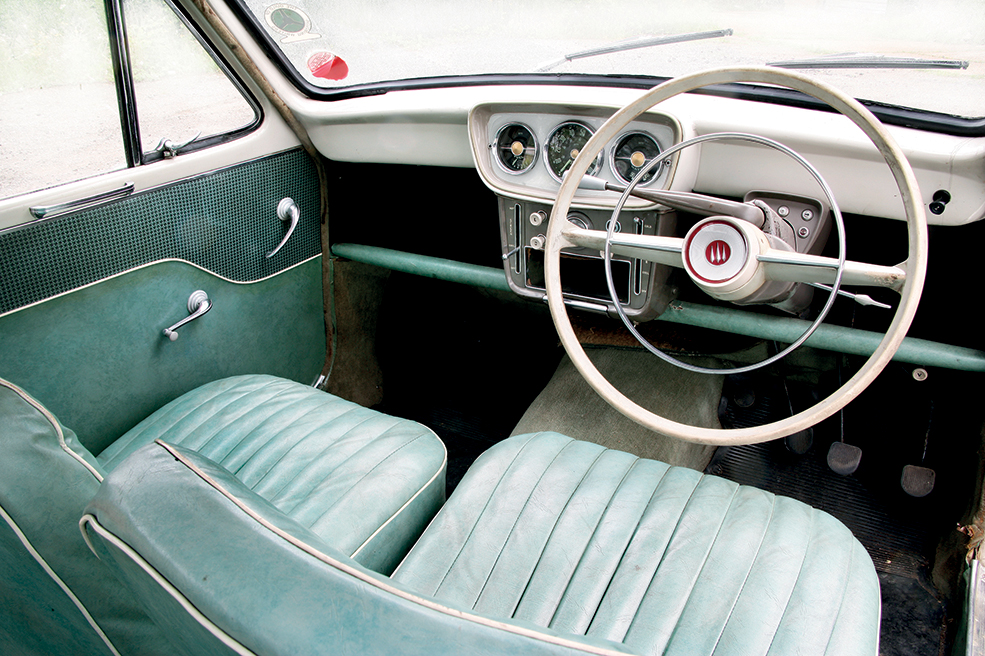
Interior, trim and electrics
When viewing a Minx, it’s vital to check that the interior is in good shape and that no items are missing or badly damaged. This is because locating items of hard and soft trim for these cars can be very difficult, although the first port of call for any missing bits should be one of the owners’ clubs. Replacing a shabby or torn headlining will be an expensive exercise, as will recovering or repairing any damaged seat coverings or door cards. New carpet sets aren’t too expensive and can be an easy way to brighten up a faded interior.
Although the electrics on these cars are simple and reasonably easy to work on, any bodged sections of wiring will be a constant source of trouble. Check that any visible wiring repairs or additions to the loom have been completed neatly and while looking around the cabin, make sure the indicators and lights all work as well as all the auxiliary switch gear.
Hillman Minx: our verdict
Owning and running an Audax Minx back in the day was always considered a safe bet. A Minx may have been a dull choice when compared to much of the competition, including its flashier siblings, but a Hillman Minx was a reliable, well-built car and today a pampered example will make an interesting weekend driver.
Unfortunately, time has taken its toll on the once-common Audax Minx and survivors maintained to current MoT standards are rare beasts. Still, find a good one and you’re in for a great classic experience.


